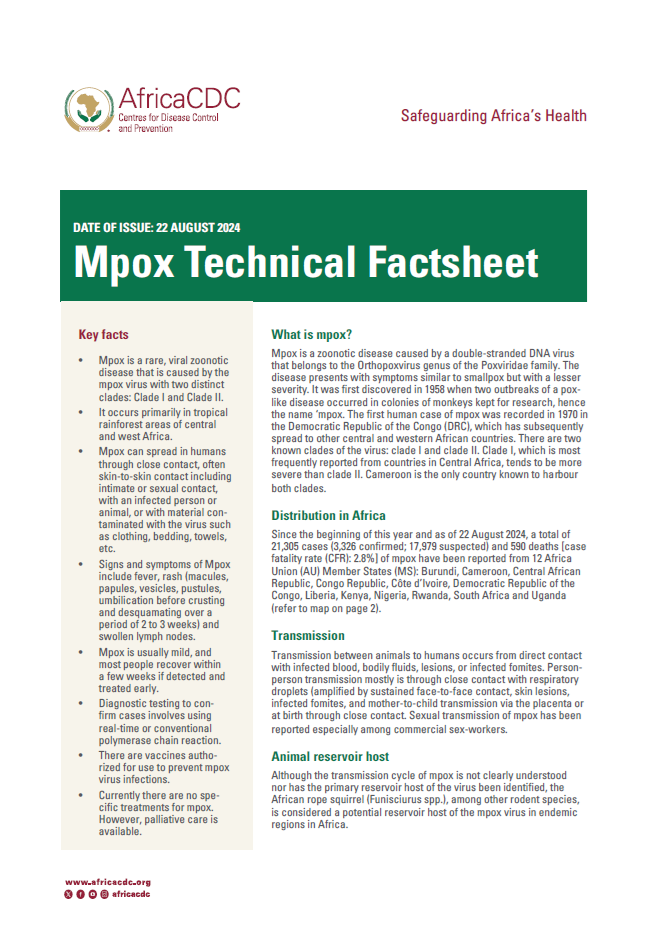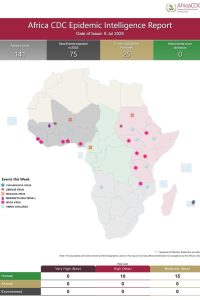
- Version
- Download 2075
- File Size 238.06 KB
- File Count 1
- Create Date 22 August 2024
- Last Updated 27 August 2024
Mpox Technical Factsheet
What is mpox?
Mpox is a zoonotic disease caused by a double-stranded DNA virus that belongs to the Orthopoxvirus genus of the Poxviridae family. The disease presents with symptoms similar to smallpox but with a lesser severity. It was first discovered in 1958 when two outbreaks of a poxlike disease occurred in colonies of monkeys kept for research, hence the name ‘mpox. The first human case of mpox was recorded in 1970 in the Democratic Republic of the Congo (DRC), which has subsequently spread to other central and western African countries. There are two known clades of the virus: clade I and clade II. Clade I, which is most frequently reported from countries in Central Africa, tends to be more severe than clade II. Cameroon is the only country known to harbour both clades.
Distribution in Africa
Since the beginning of this year and as of 26 August 2024, a total of 22,863 cases (19,222 suspected; 3,641 Confirmed) and 622 deaths, Average CFR 2.06% (95%CI: 0-4.26%) of mpox have been reported from 13 Africa Union (AU) Member States (MS): Burundi, Cameroon, Central African Republic, Congo Republic, Côte d’Ivoire, Democratic Republic of the Congo, Gabon, Liberia, Kenya, Nigeria, Rwanda, South Africa and Uganda (refer to map on page 2).
Transmission
Transmission between animals to humans occurs from direct contact with infected blood, bodily fluids, lesions, or infected fomites. Personperson transmission mostly is through close contact with respiratory droplets (amplified by sustained face-to-face contact, skin lesions, infected fomites, and mother-to-child transmission via the placenta or at birth through close contact. Sexual transmission of mpox has been reported especially among commercial sex-workers.
Attached Files
| File | Action |
|---|---|
| Mpox Technical Factsheet | Download |






